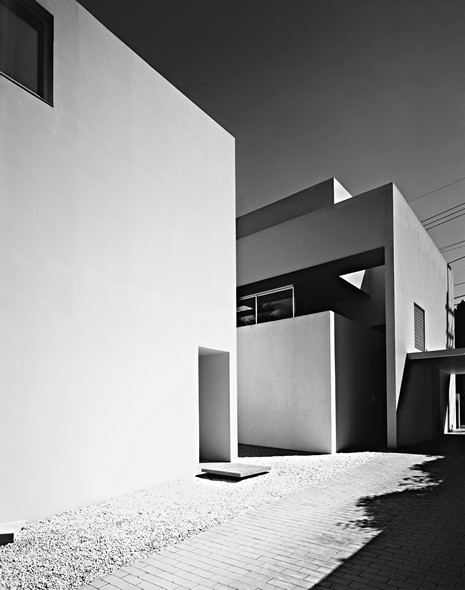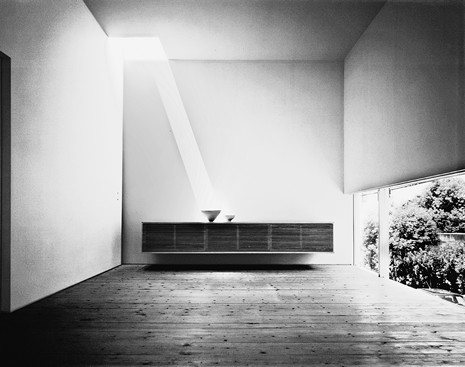Description
The plot for this design is a parcel in an area of Osaka interspersed with heterogeneous apartment blocks and some commercial buildings; it is bordered by roads on both its short sides. Two framing boundary walls contain the two building sections, and themselves form part of the composition. The cubic mass of the building develops from these two lines via an attached carport, becoming denser towards the middle, with a studio building in front. This studio section is isolated, a pure prism, with only absolutely essential apertures. It is linked with the second section by the formal language chosen, by its geometry, which matches that of the main building, and by a bridging walkway on the first floor. A careful distinction is made in the main building between living and working areas, but an express desire that they should be close together is met. This results in a tension-filled integration and differentiation of two bodies on a relatively cramped site. They want to be, and have to be, individuals, but there is no doubt that they belong together.
The spaces in the studio building provide a discussion room on the ground floor and a children’s playroom on the top floor with an open gallery above it. The ‘house’ behind is more strongly articulated, but its outline remains an undivided cube. Akira Sakamoto arranges the main living room across the full width of the rear area of the first floor, facing the second road. Access to this is via a narrow ‘entrance channel’ to the stairs to the top floor, but before one reaches the living and kitchen area one is lead through a roofed exterior space with balcony deck. Here ‘creating pathways’ implies a motif for discovering the spaces, not least a tiny gallery floor at the very top–reached by a small, steep staircase – and a bridge through the kitchen that links it with the studio. There is access to a ‘Japanese’ apartment in the form of a sleeping area on the ground floor via the main entrance, but also across the courtyard. The architect uses subtly changing air spaces and carefully placed toplight accents to create a small but complex spatial universe from which the living space detaches itself with calm but emphatic integrity.
Drawings
Photos
 Exterior view with studio building at the front
Exterior view with studio building at the front
 Interior view of the living room
Interior view of the living room
Originally published in: Klaus-Peter Gast, Living Plans: New Concepts for Advanced Housing, Birkhäuser, 2005.